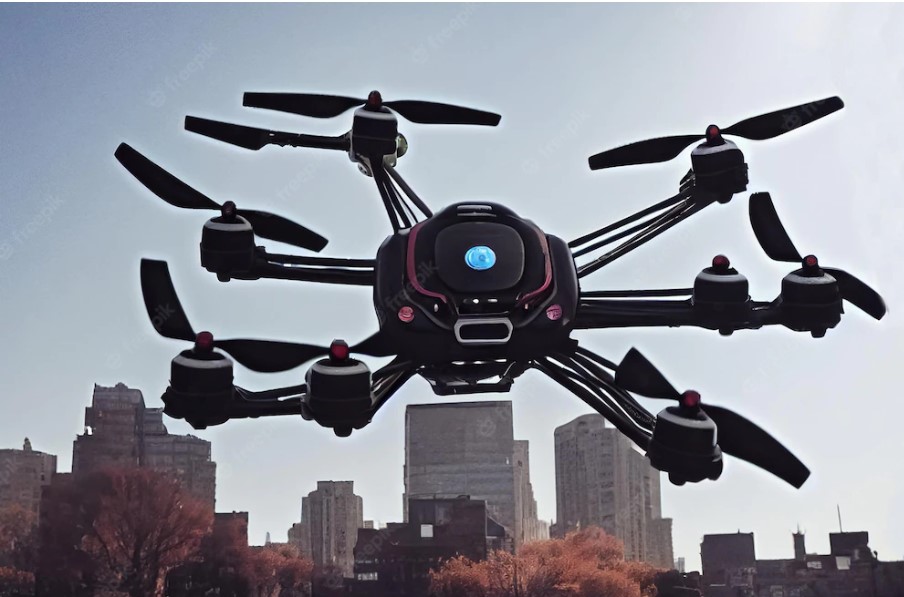In the world of photography, drones are increasingly becoming more popular. They offer photographers a unique way to capture stunning aerial shots that aren’t easily attainable through traditional methods. Drones can open up an entirely new avenue for creative expression by allowing photographers to explore and experiment with angles and perspectives not achievable on foot.
The use of drones in photography also offers advantages in terms of safety, convenience, and cost-effectiveness. With a drone, photographers can take images from up high without having to risk life or limb scaling tall buildings or mountainsides. Plus, they can travel great distances rapidly to get their shot without having to worry about transportation costs or time constraints associated with other modes of travel.
Finally, drones also come equipped with advanced features such as automated flight paths and obstacle avoidance which make it easier for even beginners to get amazing shots quickly and reliably.
Camera technology used with drones has made major advancements in recent years, allowing users to take high-quality photos and videos from amazing perspectives that would otherwise be impossible. Many camera models now offer features such as 8K video recording capabilities, image stabilisation, low-light performance, as well as advanced photo editing software that can be accessed remotely via mobile devices or computers. Additionally, some camera models are equipped with facial recognition technology which allows them to detect faces automatically in order to focus on them during recording sessions.
Some common types of sensors used on drones include GPS, altimeters, magnetometers, compasses, gyroscopes and accelerometers. GPS is a popular choice as it allows the drone to locate itself within its environment while an altimeter can measure the altitude at which it is flying. Magnetometers allow for navigation by detecting magnetic fields while compasses help maintain directional stability during flight. Gyroscopes detect angular motion to keep the aircraft properly oriented while accelerometers measure linear movement like acceleration or deceleration.
The versatility of drone cameras is a fact that can no longer be ignored. Drone cameras are changing the way we capture stunning video and photos from the sky. From weddings to real estate, drones are revolutionising our approach to aerial photography and videography.
The unique view that drone cameras offer provides immense creative potential for filmmakers and photographers alike. Smaller drones with foldable blades make it easy to transport them anywhere, making them ideal for capturing breathtaking shots in hard-to-reach locations with previously impossible angles and perspectives. With an array of additional features like 4K video recording, slow motion capabilities, and even thermal imaging, the possibilities with drone cameras are seemingly unlimited.
Moreover, the cost of entry into this technology has dropped significantly in recent years due to advancements in manufacturing technology; therefore allowing almost anyone to purchase a ready-to-fly model without breaking the bank.
Using drone survey thermal and photographic technology gives professionals access to otherwise difficult-to-reach areas or hazardous sites. The accuracy of drone cameras makes it possible to measure distances from long distances with pinpoint precision. It eliminates the need for costly scaffolding set up or expensive equipment rentals while still providing accurate measurements that are repeatable on future surveys. The ability to capture images quickly also allows projects to be completed in shorter time frames without sacrificing quality or safety protocols.
Drones have revolutionised the world of landscape photography, providing a unique aerial perspective unlike anything seen before. Using drones to capture stunning images of natural beauty is now accessible to photographers of all levels – from professionals trying to take their artistry to the next level, to hobbyists just getting started. Drones provide an ability to take photographs from angles and heights that would otherwise be impossible or extremely difficult for a photographer on foot.
From far-reaching mountain ranges and rugged coastlines, to dense forests and sprawling cities; drone technology has made it easier than ever before for photographers to capture breathtaking scenes from above with unparalleled clarity. In addition, drones offer a relatively affordable way for photographers seeking new perspectives on familiar landscapes – allowing them the freedom of exploration without ever leaving the ground.
 seolounge
seolounge